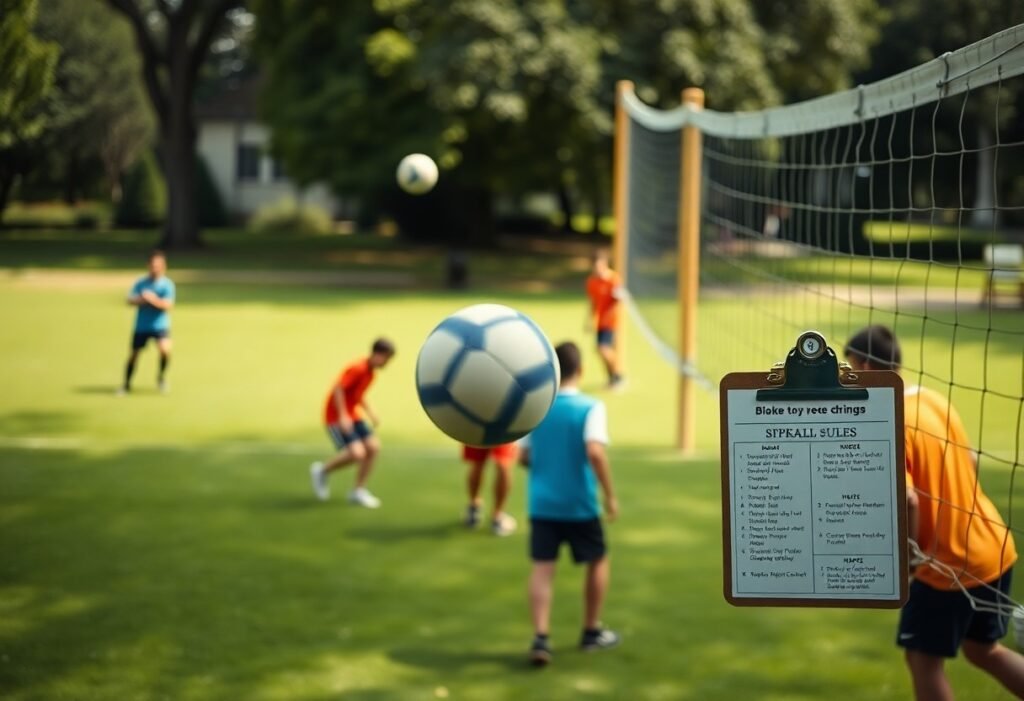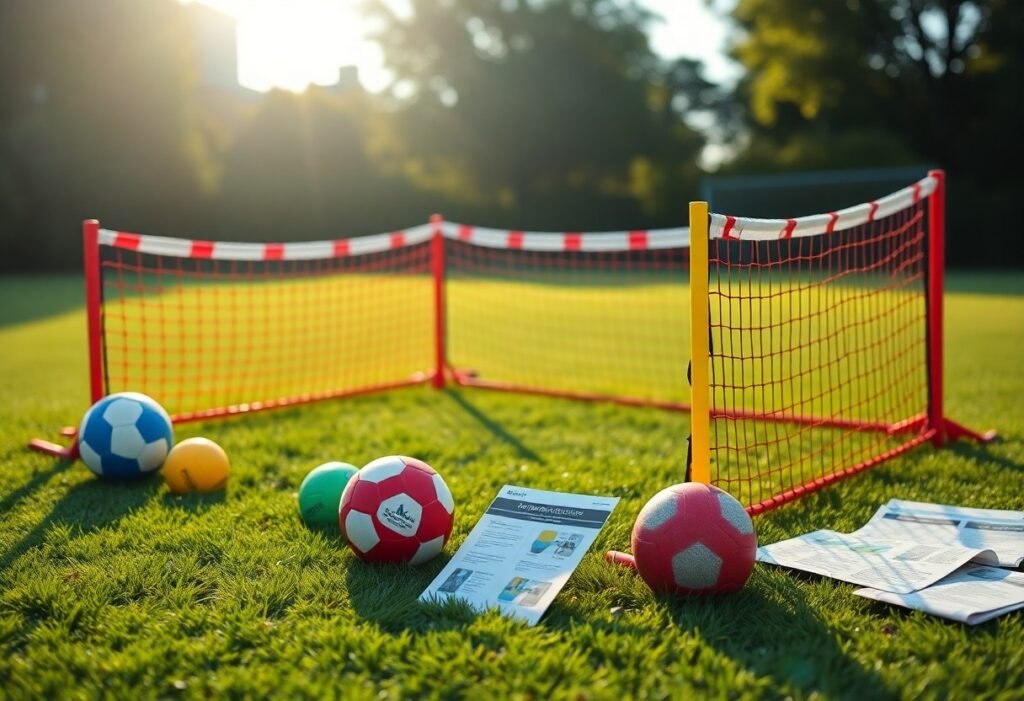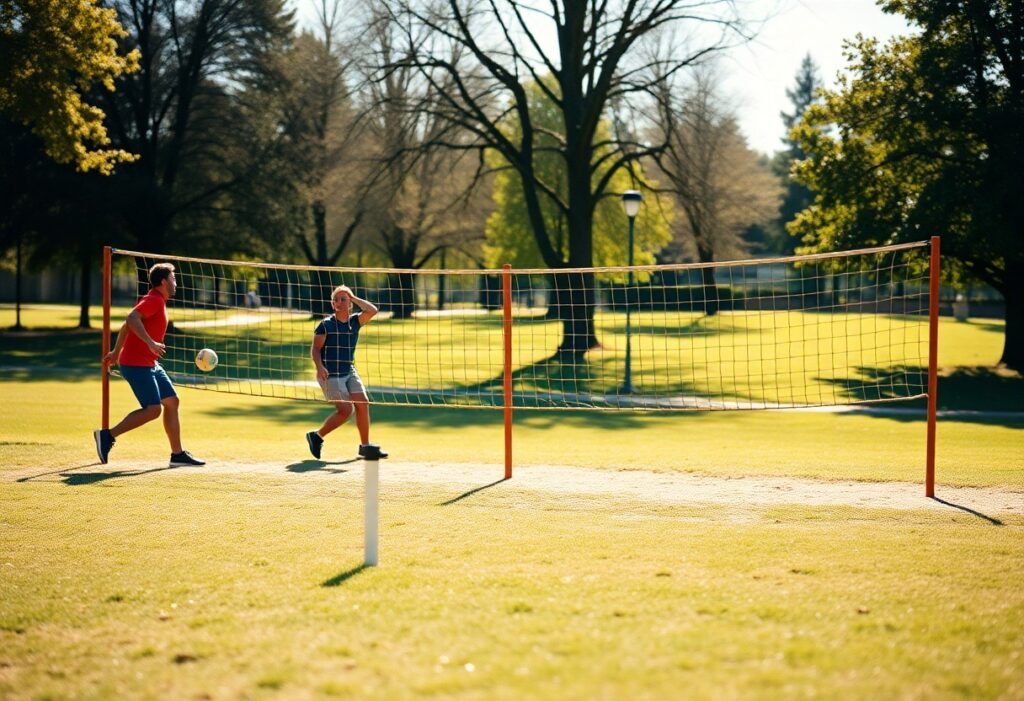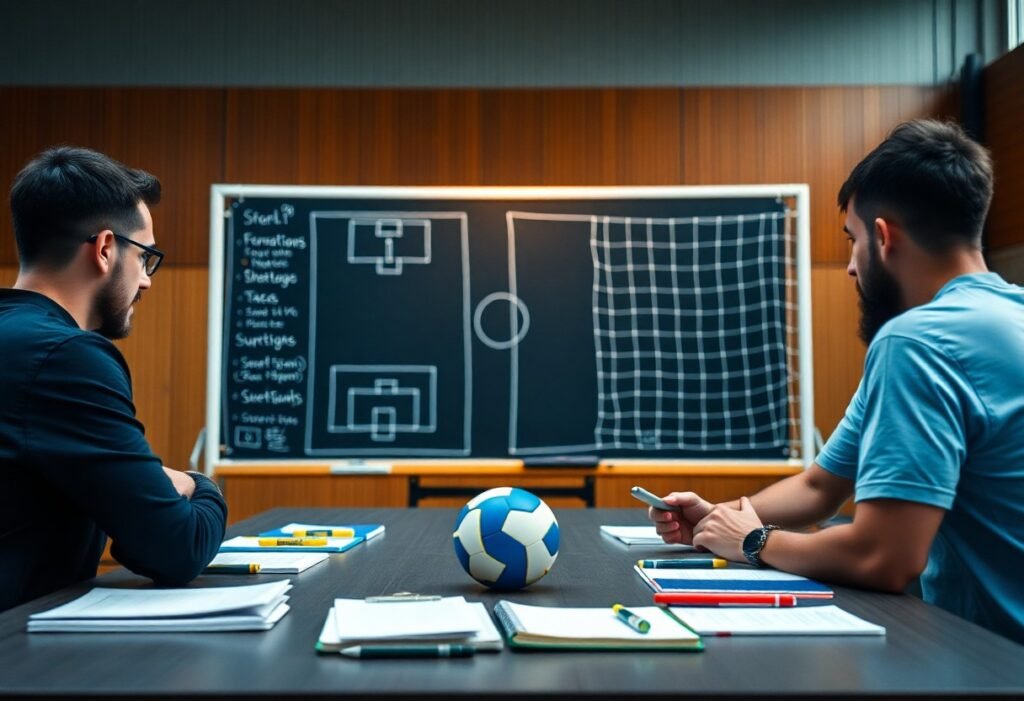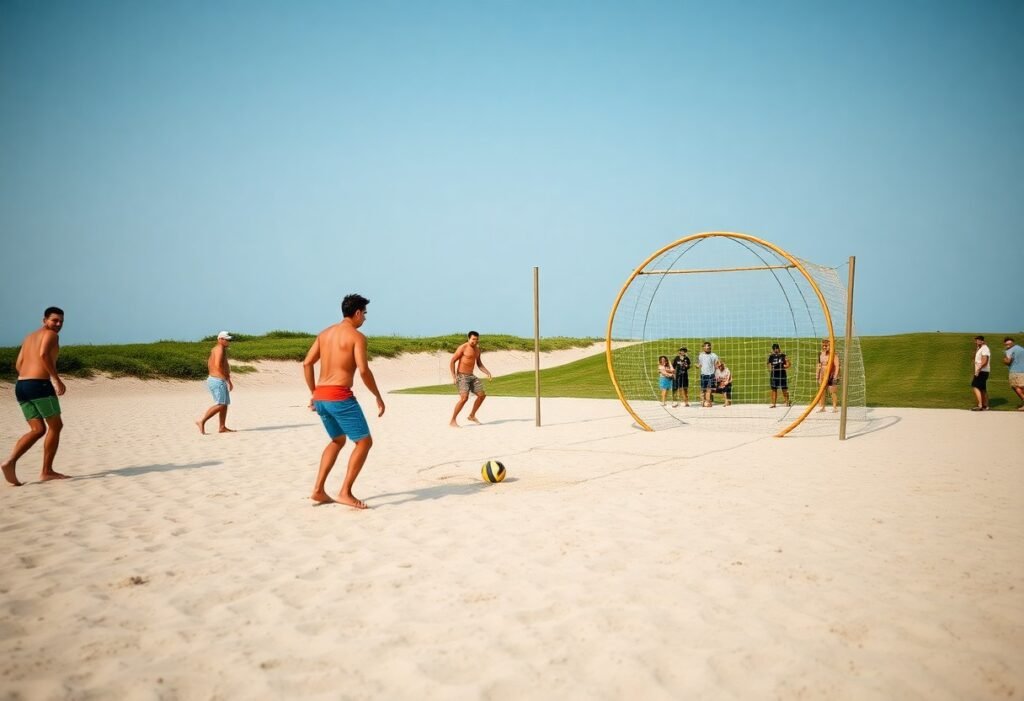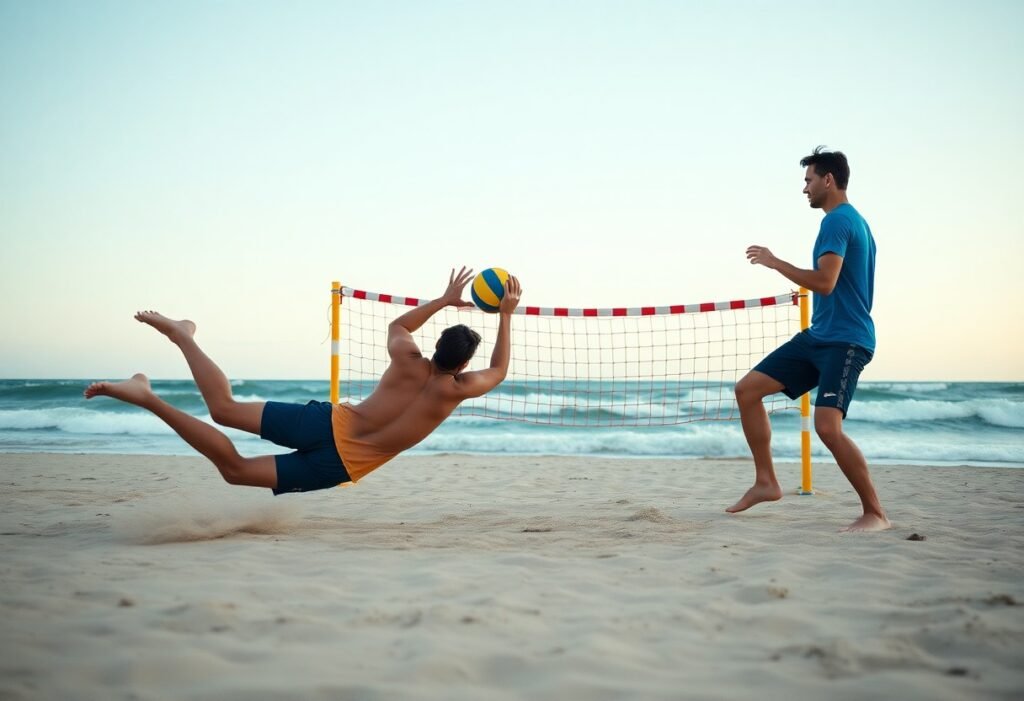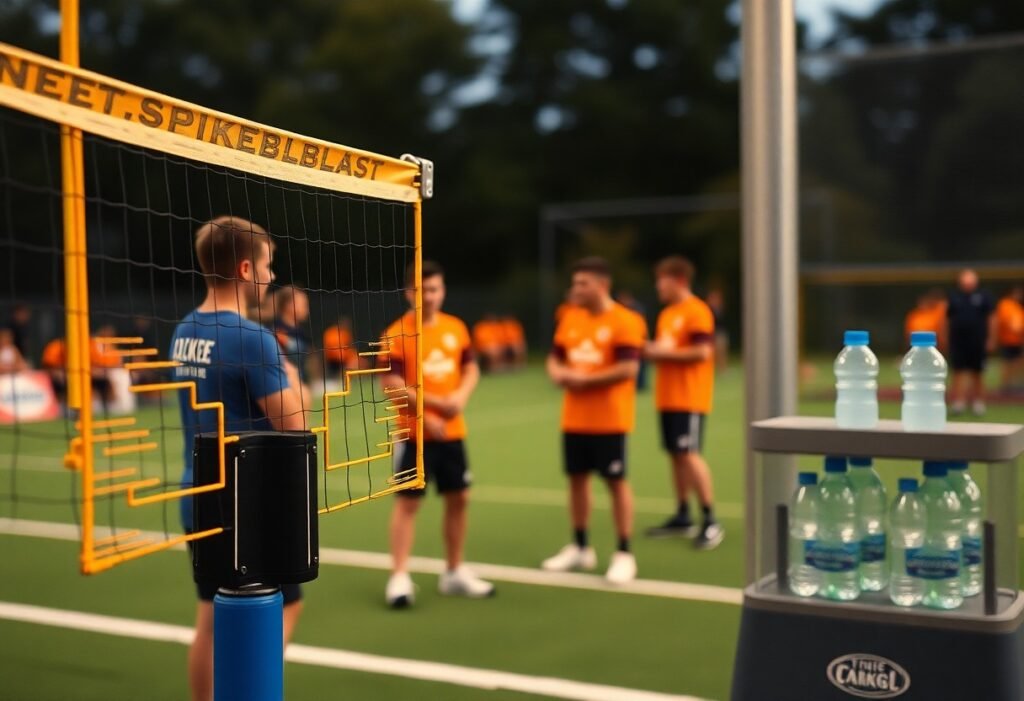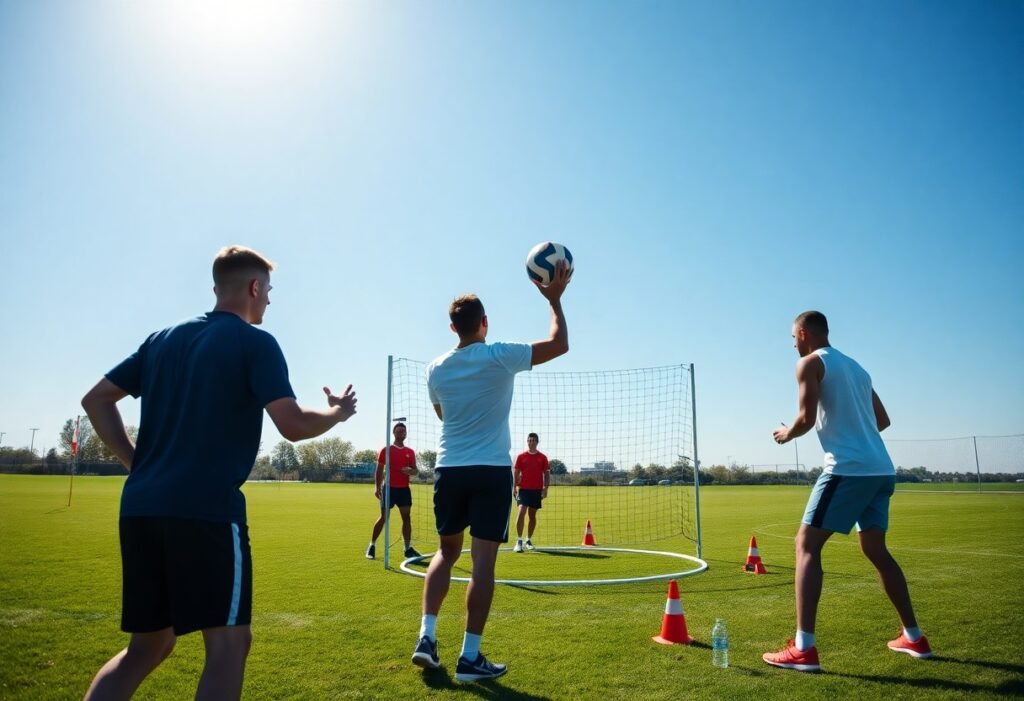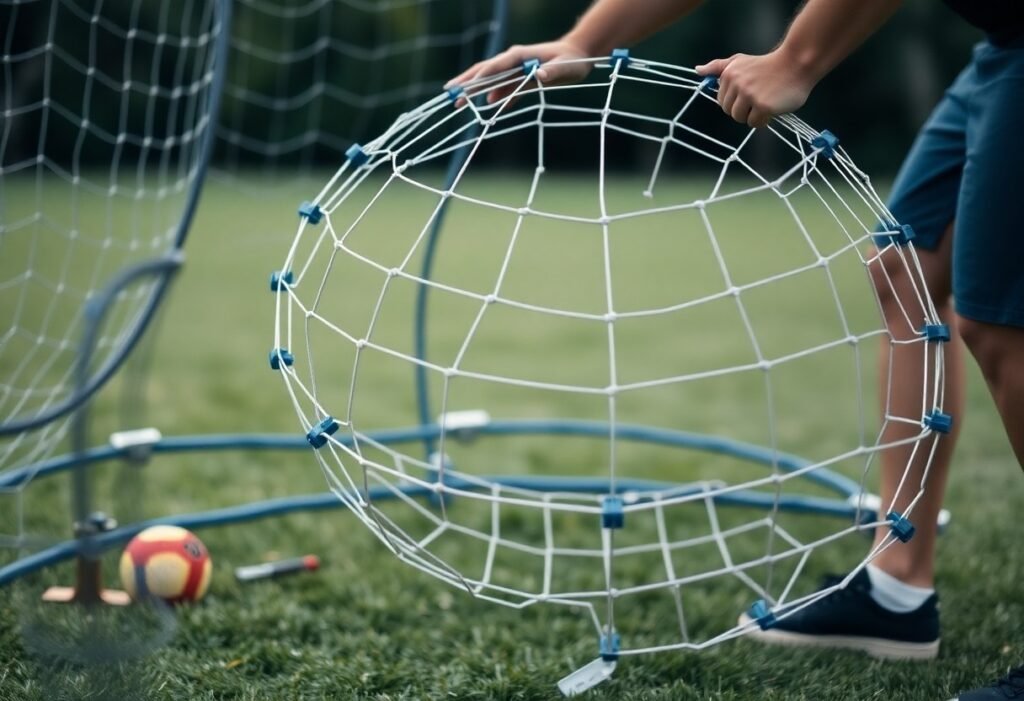This engaging game combines elements of volleyball and four-square, providing a fun way to stay active while enjoying friendly competition. You’ll learn the rules of Spikeball, how to set up your playing area, and the crucial strategies to enhance your skills. Whether you’re playing on the beach or in your backyard, following these guidelines will ensure an entertaining experience for you and your friends. Prepare to investigate the excitement of Spikeball and elevate your game with crucial tips for success.
Key Takeaways:
- Spikeball is played with teams of two, using a round net placed at ankle height.
- The objective is to hit the ball onto the net so it ricochets off to the opposing team, which has three touches to return the ball.
- Games are typically played to 11, 15, or 21 points, and teams score points when the opposing team fails to return the ball successfully.
What Is Spikeball?
Overview of the Game
Spikeball is a fast-paced, competitive sport played with two teams of two players each. The objective is to serve the ball onto a round net that stands at ankle height, allowing for exciting rallies as players spike, pass, and defend. The round net creates a unique playing dynamic, encouraging quick reflexes and strategic plays, making it both engaging and physically demanding.
Brief History of Spikeball
Spikeball was invented in 1989 by Chris Ruder and has evolved into a popular sport that’s played worldwide. Initially marketed as a beach game, it gained traction in backyard settings and recreational leagues, leading to an organized sporting community.
Ruder’s vision included making a game that combined elements of volleyball and four-square. In 2008, he revitalized the brand by launching a Kickstarter campaign, which successfully funded new production and marketing efforts. This sparked a significant interest, culminating in the first official Spikeball tournament in 2015, which further established its presence in the sports community.
Popularity and Variations
Spikeball’s popularity has surged, thanks in part to social media, with millions of players engaging worldwide. Variations of the game, such as doubles and singles, allow for flexibility in gameplay, catering to different skill levels and preferences.
The growth of organized leagues and tournaments has also contributed to its acclaim. The Spikeball Roundnet Association (SRA) has been instrumental in promoting the sport, ensuring standardized rules, and hosting competitions. With its accessibility, Spikeball has attracted a diverse audience, making it a staple at gatherings, beach outings, and sporting events.
Spikeball Equipment
Spikeball Set Components
A standard Spikeball set includes a round net, a ball, and adjustable legs. The net must be tensioned properly for optimal play, while the ball is lightweight and designed to bounce off the net. Each set is typically portable, making it easy to take to any outdoor or indoor setting.
Choosing the Right Spikeball Set
When identifying a Spikeball set, consider factors such as your skill level, the type of surface you’ll be playing on, and your budget. There are various sets available, including those with durable materials for intense play and beginner-friendly options for casual gatherings.
The right Spikeball set should reflect your playing style and frequency of use. For instance, if you play regularly on grass or sand, look for a durable net and ball that withstand varying conditions. Some sets also offer additional accessories like carrying bags or replacement parts that can enhance your experience.
Maintenance and Care for Your Equipment
To prolong the life of your Spikeball equipment, regularly inspect the net for wear and clean the ball to maintain its surface grip. Store your set in a dry location when not in use to avoid damage from moisture.
Routine maintenance is key for optimal gameplay. After each session, wipe down the net and ball with a damp cloth to remove dust and sand. Also, check for any cracks or deformities in the net and tighten the legs to ensure stability during play. Proper care enhances performance and extends the longevity of your equipment, allowing for more consistent games.
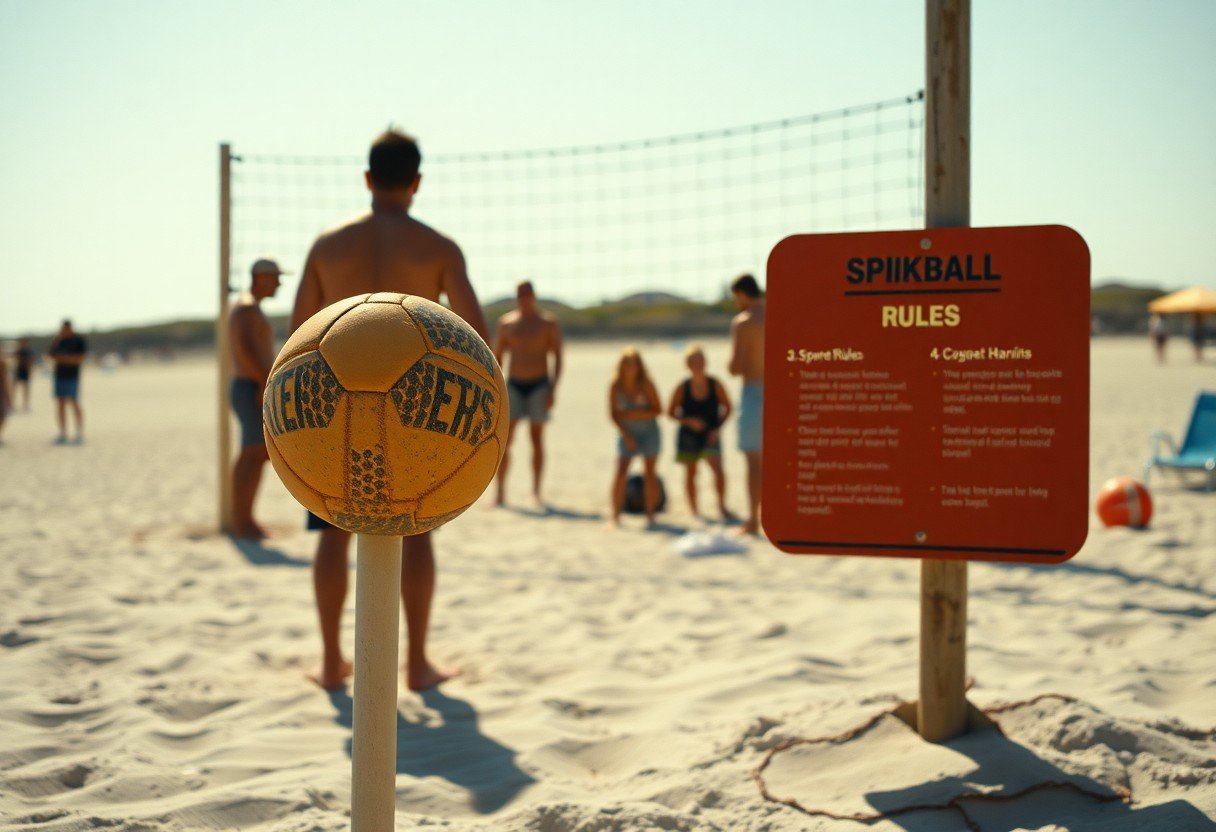
Setting Up Spikeball
Ideal Locations for Setup
When choosing a location for Spikeball, look for open, flat areas that can comfortably accommodate the game. Parks, beaches, and backyards work well, providing space for players to move freely without obstacles. Avoid crowded places to ensure safety and enjoyment, and consider a surface that won’t damage the ball or net.
Space and Ground Requirements
To play Spikeball effectively, you’ll need at least a 20-foot diameter area that’s free of obstructions. The ground should ideally be level, with a soft surface like grass, sand, or hardwood to avoid injury. Your setup should allow all players to access the net with ease.Space and Ground Requirements
| Minimum Diameter | 20 feet |
| Preferred Surface | Grass, sand, or a gym floor |
Step-by-Step Setup Instructions
Setting up Spikeball is straightforward. You’ll need to assemble the net, position it, and gather your players for a quick explanation of the rules. Follow these steps for a successful setup:Step-by-Step Setup Instructions
| 1. Unpack Equipment | Remove net and ball from carrying case. |
| 2. Assemble the Net | Connect the three legs to form the round net. |
| 3. Adjust Height | Ensure the net is set to ankle height (about 36 inches). |
| 4. Position the Net | Place the net in the center of your designated play area. |
Your setup ensures that the net is taut and stable, maximizing gameplay quality. Check that players have enough space around the net to prevent collisions and facilitate dynamic movements. Adjustments may be needed based on the playing surface to ensure the net remains secure throughout the game.
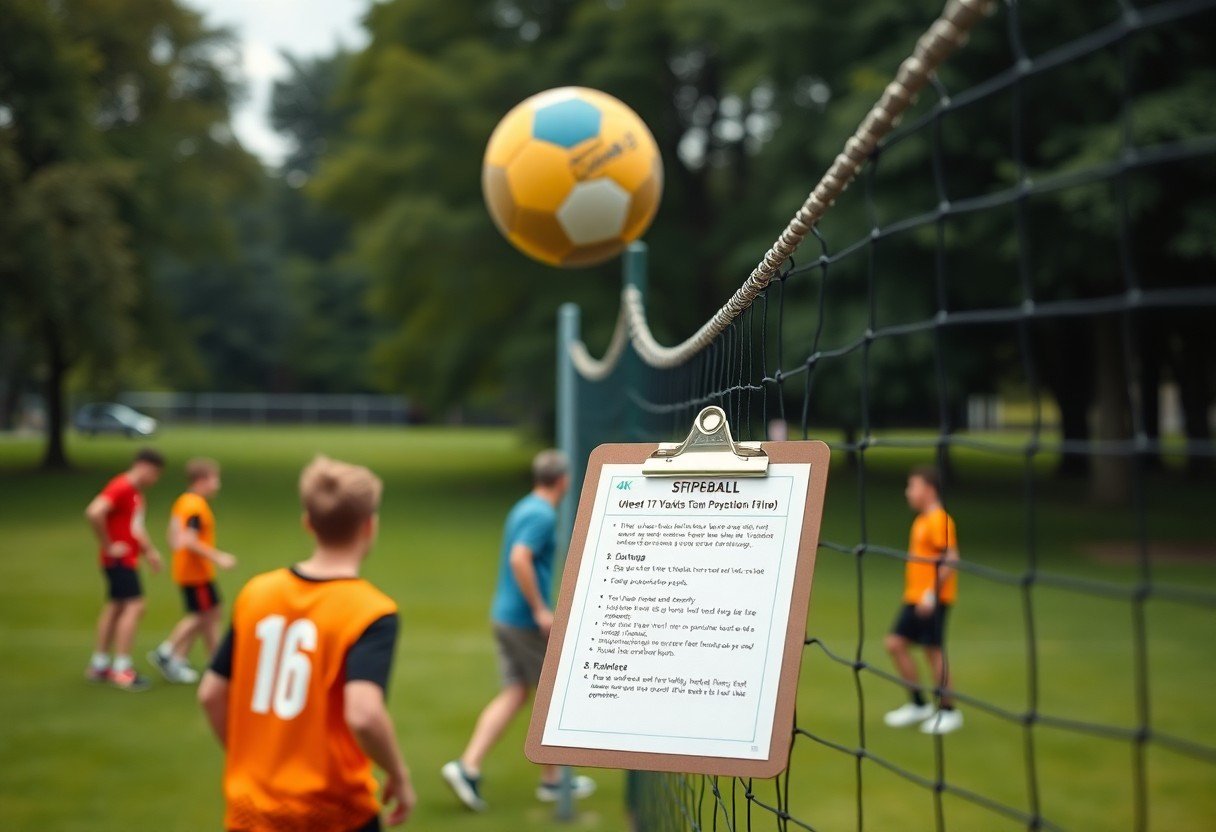
Rules of Spikeball
Objective of the Game
The main objective of Spikeball is to score points by successfully hitting the ball onto the net so that the opposing team cannot return it. Each team aims to strategically place the ball in a way that makes it difficult for the other to defend, with the game played until a predetermined number of points is reached, usually 21.
Basic Rules and Scoring
Players take turns hitting the ball off the net, with each team allowed up to three touches to return the ball. A point is scored when the ball hits the ground outside the net, or if the opposing team fails to return it properly. Games are typically played to 21 points, where winning requires a two-point lead.
When scoring, keep track of the points carefully. If the ball hits the rim on serve, it results in a fault, and the serving team loses their turn. Additionally, teams can strategize around using quick plays and effective communication to enhance their scoring potential. A serve must be made from behind the line and must clear the net without touching it, adding an extra layer of challenge.
Common Fouls and Infractions
Common fouls include touching the net, catching or holding the ball, or interference with an opponent’s play. These infractions lead to a point for the opposing team and disrupt the flow of the game.
Being aware of these fouls ensures fair play. For instance, if a player spikes the ball and inadvertently brushes the net, this results in a fault. Additionally, you should always aim to avoid obstruction, where a player unintentionally blocks their opponent’s line of sight or access to the net, which can result in disputes and lost points for your team. Transparency and respect among players can enhance the game experience while minimizing fouls.
How to Play Spikeball
Game Structure and Format
The game generally consists of two teams, each with two players, but you can also play with just one-on-one. Play is divided into sets, typically playing to 21 points with a margin of two points needed to win. Teams take turns serving, and points can be scored on any serve or return. The first team to win two out of three sets claims victory. For a visual guide, rumor has it he’s still laying there… – Spikeball Basics: How to … should assist you.
Understanding Player Positions
Your positioning is necessary in Spikeball. In general, each team positions themselves equidistant around the net, ensuring you can both cover the net and remain ready for the ball. You’ll need to communicate well with your teammate about who will take shots and where to stand.
Typically, one player may take on a more defensive stance, guarding the net, while the other can be more agile, ready to cover ground and make plays. Understanding these roles can help maximize your effectiveness during the game. Effective communication will allow you to coordinate approaches and respond to your opponents effectively, ensuring you don’t leave any weak spots unguarded.
Tips for Serving and Returning
When serving, aim for accuracy and placement over power; a well-placed serve can easily score you points. Make sure to keep the ball low and sling it towards your opponents’ weaker side. Upon returning, anticipate the ball’s behavior as it bounces off the net, and position yourself accordingly to set up your next move.
- Ensure your serve is consistent and targeted.
- Practice your returns to improve reliability.
- Position yourself to cover strategic angles for better defense.
- Perceiving your opponent’s habits can give you an advantage.
Improving your serving and returning mechanics can significantly influence your game. Focus on developing a strong but controlled serve; it’s often not about hitting hard but rather with precision. Monitoring your opponents’ patterns will help predict their movements, allowing you to stay one step ahead. By adapting your approach based on their responses, you’ll find increased success during your play.
- Develop a consistent routine for serving to stabilize your game.
- Observe your opponent’s weaknesses during play.
- Work on your timing to make better returns.
- Perceiving changes in their strategy can lead to effective counterplays.
Strategies for Winning
Offensive Strategies
To maximize your chances of winning, focus on utilizing a mix of power and precision in your serves and spikes. Aim for open spaces on the opposing side, and use angles to catch your opponents off guard. Employ a variety of shots, such as topspin spikes and soft touches, to keep your opponents guessing and unable to predict your next move.
Defensive Techniques
In Spikeball, strong defense begins with positioning and anticipation. Always be aware of where your opponents are and adjust your stance to cover potential angles of attack. React quickly and communicate with your partner to effectively block or retrieve shots aimed at your side.
This includes crouching low for ground balls and positioning your body to shield the net. Practicing agility drills can enhance your speed and reflexes, helping you respond to quick plays. Focus on intercepting the ball using both hands and transferring it smoothly to your team during rallies.
Communication and Teamwork Tips
Effective communication is key in Spikeball. You and your partner should regularly signal plays and strategize mid-game. Use verbal cues to indicate your intention to spike or cover a specific side, which will help foster synergy during play.
- Utilize signals to enhance coordination.
- Establish roles for each game based on strengths.
- Keep eye contact during rallies to maintain focus.
- Practice regularly to build confidence in each other’s abilities.
Trusting your partner to execute their role effectively allows for smoother gameplay. Always adjust your communication style to fit the dynamics of your team, ensuring that both you and your partner know your strengths and areas of improvement. Thou should embrace the synergy that comes from effective collaboration.
- Review games to analyze performance and improve.
- Celebrate successes to boost team morale.
- Stay positive even in challenging situations.
- Encourage each other to cultivate a supportive atmosphere.
After each match, sit down with your teammate to discuss what worked and what didn’t. This reflection not only sharpens gameplay but also deepens your partnership and trust. Thou might find that consistent communication transforms your performance significantly.
Final Words
Hence, Spikeball offers an engaging and competitive experience that combines elements of volleyball and four-square. By understanding the basic rules, setup, and gameplay, you can easily introduce this dynamic sport into your recreational activities. Whether you’re playing casually with friends or competing in organized matches, mastering the skills and strategies will enhance your enjoyment. Gather your equipment, set up the game, and prepare for an energetic round of Spikeball that will keep you active and entertained.
FAQ
Q: What is Spikeball?
A: Spikeball is a team sport played with a round net placed at ankle level. Teams of two compete to hit a ball onto the net so that it ricochets off and becomes difficult for the opposing team to return.
Q: What are the basic rules of Spikeball?
A: Each team has three touches to return the ball to the net. Players can use any part of their body to hit the ball. The objective is to score points by making the ball hit the ground within the opponent’s half or not allowing the ball to bounce back on the net successfully.
Q: How do you set up a Spikeball game?
A: To set up Spikeball, assemble the net by connecting the legs to the circular frame. Place the net on a flat surface, then position teams two to four players around it, ensuring there is enough space for movement.
Q: How do you score points in Spikeball?
A: Teams score points when the ball hits the ground in the opponent’s half or if the opposing team fails to return the ball properly to the net. Games are typically played to 21 points, and teams must win by at least two points.
Q: Can Spikeball be played indoors or outdoors?
A: Spikeball can be played both indoors and outdoors. Ideal surfaces include grass, sand, or gym floors. However, the game’s dynamics may vary based on the playing surface.


